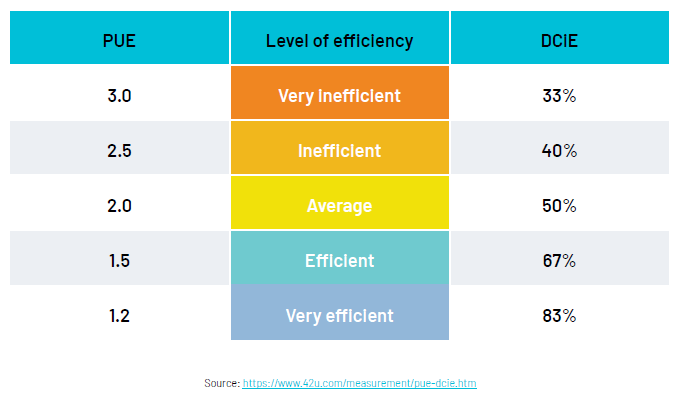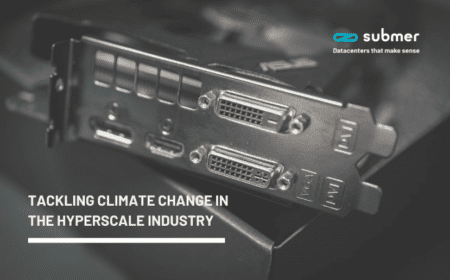Cooling, air conditioning, and energy for computing (most likely in that order) are the key factors that determine ongoing energy costs in every datacenter. IT hardware is not only expensive to run but also expensive to purchase – not to mention UPS, generators, the building itself, lighting, etc. This makes it very costly to build a brand-new datacenter, refit an old one, or repurpose an existing property. With traditional air-cooled datacenters, maintaining low levels of humidity and temperature (not to mention the not-so-obvious benefits of liquid immersion cooling) is extremely important to ensuring the correct operation of IT hardware.
PUE and DCiE Overview
Power Usage Effectiveness (PUE) and its reciprocal Datacenter Infrastructure Efficiency (DCiE) were introduced by the Green Grid – a nonprofit organization made up of a consortium of various disciplines including technology providers, facility architects, end-users, utility companies and policymakers – that collaborate to improve the efficiency of datacenters.
Measuring PUE helps datacenter operators understand how efficient their datacenter is and enables them to make comparisons of datacenters in similar locations or environmental conditions, to determine whether there’s room for improvement in areas such as adopting new technology, applying best practices, or can even inspire architectural design decisions.
How to Calculate Your PUE and DCiE
PUE represents the ratio of the total amount of energy used by a computer datacenter facility to the energy delivered to computing equipment:
PUE = Total energy entering the datacenter / Energy used by IT equipment inside the datacenter
DCiE is a metric used to evaluate the power or energy efficiency of a datacenter. DCiE represents the ratio of the total amount of energy consumed by all IT equipment and resources to the entire energy consumption of a datacenter.
DCiE = 1 / PUE
Below you can find an example of the relationship between PUE and DciE. The typical value of PUE lies between 1.2 and 2.5, and the DCiE is inversely proportional to the PUE value.

To earn its name as a meaningful benchmark, PUE/DCiE should be measured on a regular basis, alternating the days of the week and the time of day. In this way, you will be able to check if the adjustments you’ve made have made a difference to your energy efficiency.
Check out our Smart PUE Calculator to help you determine the current PUE of your datacenter and see the real benefits of immersion cooling compared to air cooling for yourself!
Some Variables
As energy costs continue to rise, more and more administrators are focusing their attention on optimizing datacenter power usage measured by PUE and DCiE.
It should be noted that the PUE of a datacenter can be affected by some variables that are specific to each site.
- Utilization rate: If a facility houses a lot of IT equipment, it will have a lower PUE than that of facilities not completely occupied by IT equipment.
- Age and design: Usually, the newer the facility is, the more efficient and modern the equipment is in terms of design and, consequently, energy consumption.
- Energy efficiency of the IT equipment: Usually, newer IT equipment can handle greater workloads while reducing power consumption.
Effect on the Environment
A recent survey by Supermicro shows there’s still a general tendency to underestimate the real importance of the PUE for datacenters.
According to survey results, the overwhelming majority of businesses don’t prioritize power consumption of the equipment when they develop datacenter strategies, despite the fact that more efficient hardware would deliver energy savings over its lifetime and lower both TCO and OPEX.
A low PUE has a clear, immediate meaning for datacenters: it indicates that the datacenter operator is not only reducing operating costs but also helping to reduce the impact datacenters have on the environment by being greener, more efficient, and generating less carbon emissions. A good example of this is the new Facebook datacenter in Singapore.
A step that our friends at the Green Grid should perhaps consider, would be to add the positive effect of the re-use of heat to the PUE and DCiE equations…
For more information on the fundamental metrics for measuring datacenter efficiency, download our specialized ebook on PUE, DCiE, and WUE, or get in touch with us at contact@submer.com to find out how we can help you achieve a PUE of 1.03 today!



